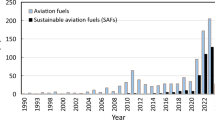Abstract
A fire event is highly hazardous for microgravity habitable environment in space due to confined volume of crew module and limited mitigation resources. The complex electric circuitry in crew module are the predominant cause of fire initiation and its early detection could prevent catastrophic fire spread. Smoke and flame detectors are two such sensing instruments for early detection and preventing major fire incidents. Development of these sensors with design constraints of compactness, light weight and intricate geometries are challenging to comply stringent project schedules. Additive manufacturing being an advantages technique to develop intricate complex geometries are carefully chosen to design and develop these sensors which gave us advantages of design flexibility of achieving two parts consolidated assembly as compared to 5–8 parts assembly developed by conventional manufacturing methods. Substantial mass and volume savings are achieved which are more than 34% and 15% respectively. This study is further compared with developed smoke detector for Orion Crew Exploration Vehicle (CEV)- NASA and established the facts of mass and size saving. The space worthiness of both subsystems are evaluated by functional and space environmental test specifications. The designs are quite stiff to achieve natural frequencies of the order of 1000 Hz to establish the structural integrity of sensors for bearing launch vibration loads. The functional aspects of these sensors are evaluated as per available standard UL217/UL268 for smoke detector and sensitivity parameters (size of fire, distance, field of view and electric spark) for flame sensor which are found quite satisfactory. Thus, the development potential using additive manufacturing proved a noteworthy use case for development of smoke and flame sensor for space environment.












Similar content being viewed by others
Data availibility
Additional data required in review process can be made available on request to corresponding author. The data are not publicly available as data were generated at Indian Space Research Organization (ISRO, INDIA) facility.
References
Ross, H.D.: Microgravity Combustion: Fire in Free Fall, 1st edn., pp. 1–33. Academic Press, San Diego (2001)
Shipp, M., Spearpoint, M.: The detection of fires in micro-gravity. Fire Saf. Sci. 4, 739–750 (1994)
Nickels, L.: Am and aerospace: an ideal combination. Met. Powder Rep. 70(6), 300–303 (2015)
Holmström, J., Partanen, J., Tuomi, J., Walter, M.: Rapid manufacturing in the spare parts supply chain: alternative approaches to capacity deployment. J. Manuf. Technol. Manag. 21(6), 687–697 (2010)
Faludi, J., Bayley, C., Bhogal, S., Iribarne, M.: Comparing environmental impacts of additive manufacturing vs traditional machining via life-cycle assessment. Rapid Prototyp. J. 21(1), 14–33 (2015)
Sutin, B.M., Niu, W., Steiner, G., O’Hara, W., Lewis, J.F.: Smoke detection for the orion crew exploration vehicle. SAE Technical Paper Series 2009-01-2542, 39–46 (2009)
Aboulkhair, N.T., Everitt, N.M., Ashcroft, I., Tuck, C.: Reducing porosity in alsi10mg parts processed by selective laser melting. Addit. Manuf. 1–4, 77–86 (2014)
Urban, D.L., Ruff, G.A., Brooker, J.E., Cleary, T.G., Yang, J.C., Mulholland, G.W., Yuan, Z.-G.: Spacecraft fire detection: smoke properties and transport in low-gravity. In: 46th AIAA Aerospace Sciences Meeting and Exhibit, pp. 2008–806 (2008)
Urban, D.L., Ruff, G.A., Cleary, T.G., Yang, J.C., Mulholland, G.W., Yuan, Z.-G.: Measurement of smoke particle size under low-gravity conditions. SAE Int. J. Aerosp. 1(1), 317–324 (2008)
Meyer, M.E., Urban, D.L., Mulholland, G.W., Bryg, V., Yuan, Z.-G., Ruff, G.A., Cleary, T.G., Yang, J.C.: Evaluation of spacecraft smoke detector performance in the low-gravity environment. Fire Saf. J. 98, 74–81 (2018)
Kimzey, J.H.: Skylab experiment M479 - zero gravity flammability. In: Conf. Proc. Third Space Processing Symposium on Skylab Results, vol. 1, pp. 115–130 (1974)
NFPA: NFPA 72-National Fire Alarm and Signaling Code, 2013 edn., pp. 21–24221224307309 (2022)
ISO/ASTM: 52900:2021(E)- Additive Manufacturing- General Principles- Fundamentals and Vocabulary, p. 11 (2021)
Liu, R., Wang, Z., Sparks, T.E., Liou, F.W., Newkirk, J.W.: Aerospace applications of laser additive manufacturing. In: Laser Additive Manufacturing, pp. 351–371. Woodhead Publishing, Cambridge (2017)
Gill, S.S., Arora, H., Jidesh, S.V.: On the development of antenna feed array for space applications by additive manufacturing technique. Addit. Manuf. 17, 39–46 (2017)
ISRO: Precision Machining facility, Space Application Centre (SAC), Ahmedabad, India (2022)
Gruber, S., Grunert, C., Mirko, R., Lopez, E., Marquardt, A., Brueckner, F., Leyens, C.: Comparison of dimensional accuracy and tolerances of powder bed based and nozzle based additive manufacturing processes. J. Laser Appl. 32, 032016 (2020)
Zhang, X., Liou, F.: Introduction to additive manufacturing. In: Additive Manufacturing, pp. 1–33. Elsevier, Amsterdam (2021)
Steinberg, D.S.: Vibration Analysis for Electronic Equipment, 3rd edn., pp. 150–230. Wiley, New York (2000)
UL217: Sec.37, Single and Multiple Station Smoke Alarms, 6th edn. Underwriters Laboratories, California (2006)
UL268: Sec.30, Smoke Detectors for Fire Alarm Systems, 6th edn. Underwriters Laboratories, California (2009)
G.Cleary, T.: A study on the performance of current smoke alarms to the new fire and nuisance tests prescribed in ANSI/UL 217-2015. National Institute of Standards and Technology Technical Note 1947, 7 (2016)
Karkun, M.S., Dharmalinga, S.: 3d printing technology in aerospace industry - a review. Int. J. Aviat. Aeronaut. Aerosp. 9(2), 032016 (2022)
Author information
Authors and Affiliations
Corresponding author
Ethics declarations
Conflict of interest
The authors declare that they have no known competing financial interests or personal relationships that could have appeared to influence the work reported in this paper.
Additional information
Publisher's Note
Springer Nature remains neutral with regard to jurisdictional claims in published maps and institutional affiliations.
Rights and permissions
Springer Nature or its licensor (e.g. a society or other partner) holds exclusive rights to this article under a publishing agreement with the author(s) or other rightsholder(s); author self-archiving of the accepted manuscript version of this article is solely governed by the terms of such publishing agreement and applicable law.
About this article
Cite this article
Singh, A., Arora, H., Kumar, V. et al. Application of additive manufacturing in developing smoke and flame detectors for a habitable microgravity environment. Int J Interact Des Manuf (2024). https://doi.org/10.1007/s12008-024-01756-8
Received:
Accepted:
Published:
DOI: https://doi.org/10.1007/s12008-024-01756-8




